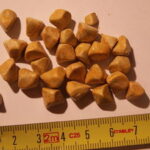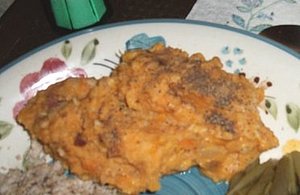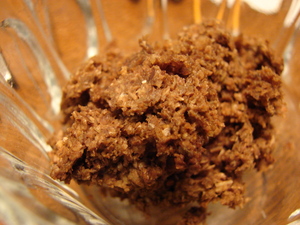Gallbladder surgery is not an elective surgery like a face lift. Removing a gallbladder can be life saving when the organ is showing signs of not working properly. Two of the most common reasons for gallbladder removal are gallstones and gallbladder sludge.
Gallstones
A gallbladder is most often removed because it contains gallstones. Cholesterol and pigment are the two identified types of gallstones. It is believed cholesterol stones form for one or more reasons. Tthe gallbladder isn’t emptying right, too much cholesterol, too little bile salts or too much bilirubin. “Bilirubin is a yellow pigment in the bile made by the liver,” as defined by the NIH (National Institute of Health).
Pigment stones occur when the liver creates too much bilirubin. These stones seem to be more likely to form in people with existing disease, such as liver cirrhosis, hereditary blood disorders like sickle cell anemia, or infections.
The National Digestive Diseases Information Clearinghouse (NDDIC) notes gallstones can commonly block the bile ducts causing inflammation in the any or all of the three ducts, liver and pancreas. The NDDIC warns that if bile ducts are blocked for a long time, severe injury or infection can occur in gallbladder, liver, or pancreas. Left untreated long enough, gallstones can be fatal Gallbladder Sludge
Gallbladder Sludge
Gallbladder sludge is gelatin-like gunk made of a combination of cholesterol and calcium. Gallbladder sludge just lays in the gallbladder without moving along through the digestive system, as it should. Sludge occurs when the gallbladder stops functioning or slows down. Scientists believe sludge can form gallstones. Like gallstones, sludge can cause infection in the gallbladder, pancreas or liver. Leaving symptoms untreated for too long can lead to death.
Stones and Sludge Sharing Symptoms
Both gallstones and gallbladder sludge problems can have vague signs, so diagnosis needs tests eliminating other health issues. Common complaints can be pain occur within a few hours of eating in the upper middle, upper right of the belly, radiating around to the upper right back, or any combination of those. Other symptoms can be nausea, indigestion, vomiting, low fever and infections. All can happen in various intensities and frequencies.
Even the first gallbladder attack can be an emergency situation, warns the NDDIC. Go to hospital if there any fever, constant pain, pain that radiates from upper right abdomen around to upper right back, or jaundiced skin or eyes, where the color changes to a yellow tint.
Sources
NDDIC (National Digestive Diseases Information Clearinghouse)
What is Gallbladder Sludge?
National Institute of Health
Disclaimer
This article is for informational purposes only and does not promise or imply any medical advice or health outcome. Individuals must always seek counsel from a licensed health professional for any health issue. The author is not responsible for person’s actions or outcomes regarding topics published or discussed in comments.
Reference:
- What is Liver Hemangioma? www.associatedcontent.com/article/2945024/what_is_giant_cavernous_liver_hemangioma.ht
- Liver Screening for Hepatitis www.associatedcontent.com/article/2218625/hepatitis_risks_screening_free_liver.html?c
- What is Gallbladder Sludge? www.associatedcontent.com/article/2870098/what_is_gallbladder_sludge.html?cat=5




